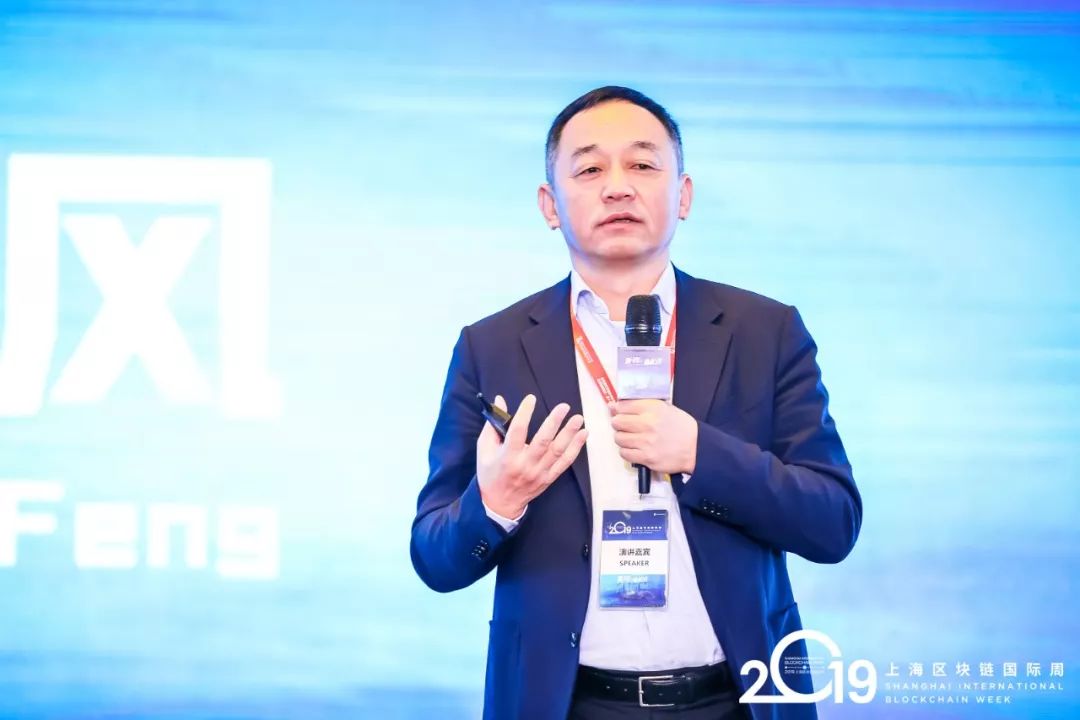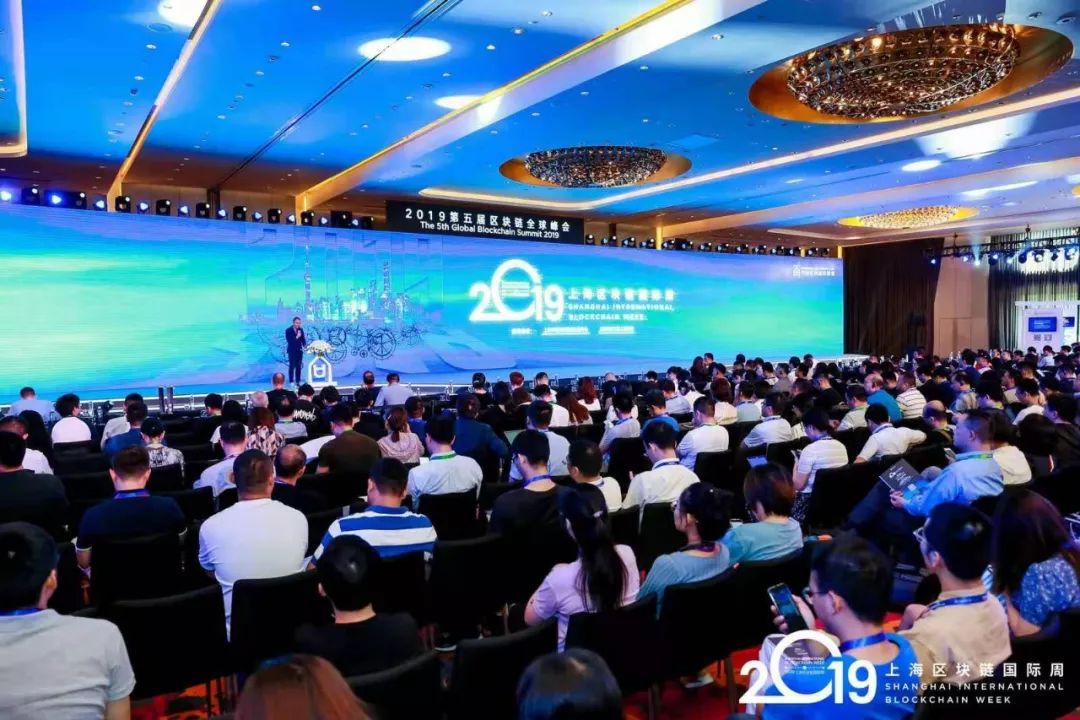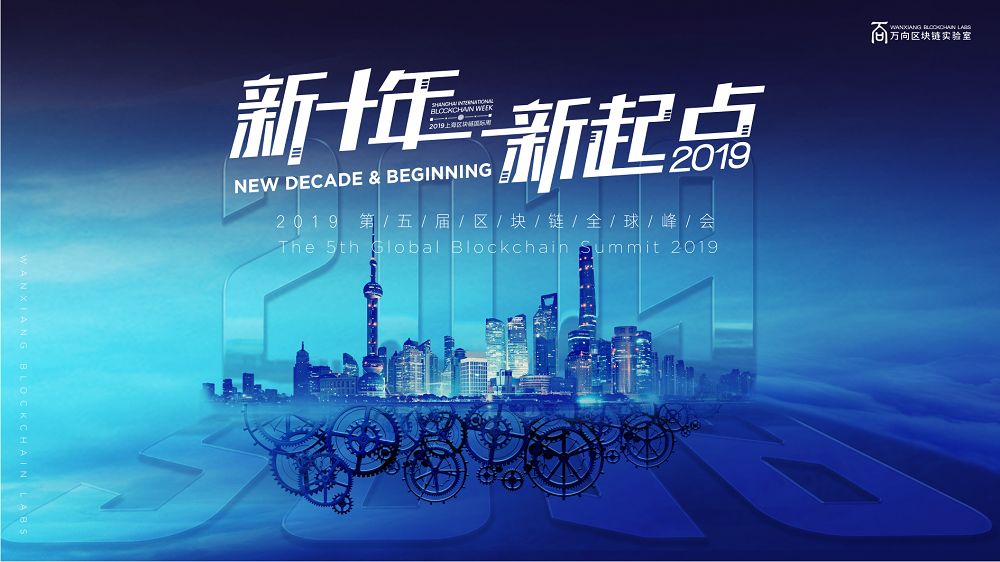Xiao Feng's latest speech: Thoughts caused by Libra
On September 18th, the 2019 Shanghai Blockchain International Week hosted by Wanxiang Blockchain Lab: The 5th Global Summit of Blockchains was successfully concluded. With the theme of “New Beginning of the New Decade”, the summit attracted thousands of participants, many leaders from around the world, and dozens of industry activities around the world.
At the summit, Wanxiang Blockchain announced a strategic cooperation with Karma Automobile to jointly promote the exploration, innovation and landing of the combination of emerging technology and physical industry. Dr. Zou Chuanwei, the chief economist of Wanxiang Blockchain & PlatON, also preached the "White Paper on Distributed Economy" and published a proposal for the design of blockchain economic mechanism.
At the meeting, Dr. Xiao Feng, Vice Chairman and Executive Director of China Wanxiang Holdings and Chairman and General Manager of Wanxiang Block Chain, delivered a closing speech entitled "Thinking Caused by Libra".
The following is the full text of the speech, compiled from the site shorthand, some of which do not affect the original intention of the deletion.
- Digital currency transactions can also be recorded offline, and storage solution GK8 receives $4 million in funding
- Star project, well-known VC gathering, Wanxiang Summit, a number of guest speech highlights
- Opinion | ETH Spring is coming?

Taking advantage of the privileges of the organizers, my last speech was mainly to say thank you to all the guests who have persisted in the present. Thank you all, these two days have worked hard!
This year is more than the guests who stayed last year. I know it is not because of me. Because I was the last one last year, mainly because of Vitalik (live laugh).
This year, I want to share with you that some of my personal thoughts caused by Libra are not to comment on Libra.
(1) Currency perspective
Most people evaluate Libra from a currency perspective. Some people say that it is a currency. Some people say no, is it true? I think that it is not only the sovereign government that can issue currency. From the perspective of credit endorsement, there have been three types of issuers endorsing currency credits over the past few thousand years, or issuing money by credit endorsement.
(1) Sovereign currency. Sovereign governments endorse their sovereign credit. The US dollar, the renminbi, and the future digital currency of the central bank are all endorsements of sovereign credit.
(2) Cross sovereign currency. This is a currency issued under multiple sovereign credit endorsements, such as Libra, which may be issued next year. Libra has stated that it will be issued as a reserve currency with short-term investment instruments of the national currency or sovereign government (organization) of four sovereign countries (organizations).
(3) Non-sovereign credit endorsement currency, which is also the oldest. Such as gold, bitcoin, etc., as well as the stable currency DAI (Editor's Note: Maker DAO's stable currency) issued by digital assets as Qualified by Vitalik.
Whether it is Libra, Bitcoin or DAI, from the perspective of credit endorsement, there is no innovation. This of course is not to devalue Libra or Bitcoin, but nothing new under the sun. We do not have to worry, the shape and function of money have been changing.
Second, the issuance of digital currency.
In fact, there are usually three main types of entities that issue digital currency:
(1) Technical geeks. Bitcoin was created by technical geeks, and Vitalik created ETH. Most innovations, especially disruptive innovations, are created by technology geeks from scratch. It may then continue to be optimized and improved by other agencies to make it more suitable for the real world and regulatory requirements, and thus gradually promoted.
(2) Commercial institutions, private institutions. Libra, as well as JP Morgan, who had earlier announced that it would issue a settlement currency for the B-side, is a private institution.
(3) Central Bank. The People's Bank of China already has a clear road map, and the European government has also indicated that it wants to reject Libra and issue digital currency based on the EU region.
In summary, perhaps the most appropriate way to issue digital currency is to create technical geeks, private institutions to explore, and finally to be issued by the central bank.
Third, the use of digital currency.
Cash is absolutely legal, but the bank currency is not. In the United States, the deposit insurance limit before 2008 was $100,000, and after the financial turmoil it was $250,000. Therefore, it is safer to use 100% of assets like Libra as a mortgage. But if the reserve is 100% in the presence of the central bank, it is perfect, and if it is managed by a third-party market, it will be flawed. Because there will definitely be risks.
In the past, Dr. Zou Chuanwei also said that digital currency is a very special currency, not a universal currency, and cannot be used to solve all the common functions of the currency. It must be a currency that is combined with the scenario, specific needs, and specific uses.
Why is there Internet payment, not a bank service? Quite simply, two people buying and selling on the Internet, if using a bank transaction, may take three to four steps to complete the payment. And the customer conversion rate on the Internet will fall from 80% to 2% in more than three steps. If there are so many purchases that cannot be achieved because of the cumbersome payment, transaction, and payment processes, then the e-commerce is not commercially viable. Payment must be combined with the scene, and it must be done on-demand at any time and anywhere, and the Internet e-commerce can be made.
Similarly, the promotion of central bank digital currency may also be in trouble if it is not done with commercial organizations that can combine scenarios and traffic with customer needs.
 The 5th Blockchain Global Summit Site
The 5th Blockchain Global Summit Site
(2) Financial perspective.
Libra claims to build a new generation of financial infrastructure. Why can you say this? Because it is based on blockchain. The bottom three elements of the blockchain are used to build a new generation of financial infrastructure: a new accounting method, a new account system based on encrypted digital wallets, and a new accounting unit based on cryptographic digital currency. Libra is To C, who claims to build a personal payment system for 2.7 billion people. JPM is To B, to establish an interbank clearing system. They are all built on new accounting methods, new accounts, and new accounting units. To make it easier to understand that Libra is a new generation of personal payment systems, I have divided the evolution of personal payment systems.
Banknotes are the first major reform and innovation in personal payment systems. Personal payment is very inconvenient before the banknotes appear, especially cross-regional payments. If you want to ship the silver dollar from Shanghai to Beijing, you need to go through the darts and push the car to take the horse. It is much more convenient after you have the banknotes.
Banknotes appear as a more convenient form of money, which is actually related to the development of science and technology: papermaking and printing in the Song Dynasty are mature enough. It is the continuous development of technology that meets the demand for lower cost and higher efficiency.
The second generation personal payment system is an electronic payment system based on bank cards. Banknotes are difficult to cross-border, but bank cards are more convenient to pay around the world. Similarly, bank card electronic payment systems also benefited first from the development of communication networks.
The third generation personal payment system is Alipay and WeChat payment. This is an internet wallet-based mobile payment system. In the Internet scenario, the payment service of the bank account has been unable to meet and solve the real-time peer-to-peer payment demand, so Internet payment was born. The bank card does not complete the transaction directly with the customer, but is done through the internet wallet.
The fourth generation personal payment system is a digital currency payment system based on blockchain and cryptographic address created by Libra.
It can be seen that in the four generations of payment systems, except for the second generation, which uses bank accounts and payment networks directly, banks are hidden behind the back end. The concept of open banking has long existed.
Banks are not without a role under the new technology, but will hide behind, export account capabilities, payment capabilities, etc. through the API, or use a set of banking systems to support other customers.
From a financial perspective, Yao Qiang has already talked about the relationship between digital finance and digital assets yesterday. I won't talk much about it. A new generation of digital financial systems requires a blockchain and digital currency, or a digital financial system is built on the blockchain digital currency financial infrastructure.
How do you understand the digital economy from a business perspective? The driving factor of the industrial economy is fuel, and the driving factor of the digital economy is data. How does data drive a business? My summary is to model the data computer, use algorithms to organize the data, and program the business process computer into a smart contract. This digital economy is not a digital economy from the perspective of economists. A series of digital technologies such as the Internet, the Internet of Things, cloud computing, artificial intelligence, and blockchain help companies complete the organization of digital economy and digital commerce.
These digital technologies have three characteristics : Across time and space. The data naturally has a penetrating instinct. Data circulation is borderless, across time and space. At the same time, the data has a penetrating type, the vertical can penetrate the market level , the transaction becomes point-to-point, the intermediary between the buyer and the seller is no longer needed, and the horizontal can shorten the industrial chain .
Because of the point-to-point, transaction settlement must be in real time. Shopping with a bank card to the mall is not a peer-to-peer transaction, because it takes time for the merchant to receive the money. But no problem, because the bank did a credit guarantee. But what if there is no intermediary guarantee like a bank? Then it must be settled. The blockchain is the network where transactions, clearing, and settlement are completed simultaneously. The characteristics of digital technology have enabled digital finance to remove intermediate links. Core features are point-to-point payment clearing and non-guaranteed transaction settlement. Blockchain and digital currency are the best technical solutions to meet these needs.

(3) Business perspective.
Any new application based on disruptive technology has traditionally had two routes.
Route 1: Think of new technologies as a tool to improve traditional business models and improve marginal benefits.
Route 2: Think of new technology as a system for refactoring the underlying logic of business.
There are many cases. For example, a few years ago, when Internet companies talked about "financial technology," many people in the traditional financial industry liked to talk about "technical finance," which is a tool used to improve existing business models. The "financial technology" is to use the Internet and digital technology to reconstruct the underlying logic of finance.
Why does Libra adopt the "association" structure? Why doesn't Facebook control it? It is also based on the technical characteristics of the blockchain. If Facebook builds Libra on its own, it's likely that no one will use it because it's hard to trust.
The previous is about the characteristics of digital technology, making the decentralization of business activities an inevitable trend. Now let's talk about the development of business. There are two points:
1. Economic globalization 2.0. Because the Internet is no longer the era of corporate globalization, not a company turns itself into a multinational company, but any individual can conduct peer-to-peer transactions. The development of economic globalization has become a personal globalization, solving point-to-point transactions, and achieving peer-to-peer services has become a prominent problem. The characteristics of blockchain technology for real-time clearing and settlement, peer-to-peer transaction settlement can be used to help the globalization of personal business activities.
2. Economic digitalization. When data is aggregated to a certain extent, circulation is basically across time and space. This makes the financial payment needs of many commercial activities on the go. The payment clearing service that can not meet the needs of virtualization can be eliminated by the market. The best case is the comparison of NFC's near-field payments and scan-code payments supported by Internet companies.
Therefore, the new life needs, business needs, and financial needs brought about by new technologies must be met by a distributed, decentralized approach.
Blockchain block rewards, whether it is a 10 minute reward or a 1 second reward, are actually paid for those who have worked for the blockchain for the 10 minutes or 1 second.
I have read a document that about 34% of people in the United States do odd jobs, are not affiliated with any business, and are not employed by anyone. Instead, they provide services to everyone through the Internet. The best way to calculate the salary of a part-time job is to pay by time. If the mechanism of blockchain labor compensation can be used well, the zero-cut economy can be realized globally. For example, people who hire Brazil in China work for you, do not need an intermediary, and have a zero coefficient of friction. What a good piece? thing.
The sharing economy is the same. How do you get a reward when you rent a thing for someone else for 10 minutes? By bank transfer, or through a blockchain smart contract? With smart contracts, you get paid immediately. Obviously, the future sharing economy and the zero-work economy are based on blockchain and digital currency . At present, I can't think of a better solution, close to zero cost, and can complete the incentive problem of the zero-work economy and the sharing economy in real time and efficiently, and the payment of compensation.
Today (Zou Chuanwei) just introduced a white paper on distributed economy. The distributed economic ecology can be played in an infinite loop, without ending in gambling, or letting someone lose or win.
This reminds me of Mr. Ma Yun, the founder of Alibaba, who said “customer first, employee second, shareholder third”, which is a distributed economic concept in the simple sense. Not long ago, nearly 200 famous American entrepreneurs of the American Business Roundtable issued a new corporate manager mission – "Enterprises cannot maximize the interests of shareholders." The maximization of social welfare means that the welfare of all parties involved in all enterprises should be inspiring and compatible, and not only highlight one of them, especially the maximization of shareholders' interests. The blockchain is incentive-compatible for stakeholders, not one of them. Both Bitcoin and Ethereum have no shareholders and all participants can be motivated.
This is some thoughts caused by Libra. Thank you all, thank you again for attending today's summit! (End of the article)
We will continue to update Blocking; if you have any questions or suggestions, please contact us!
Was this article helpful?
93 out of 132 found this helpful
Related articles
- The Fed cut interest rates again by 25 basis points, and bitcoin "rocket fuel" is ready.
- Bitcoin continues to remain weak, mainstream currency suspends offensive adjustments pending
- BTC and ETH: Positioning victory
- Is the Fed a resolution for Bitcoin?
- Line's cryptocurrency exchange is online, 80 million Japanese users can conduct cryptocurrency transactions
- The German government approves a blockchain strategy to prevent stable currency from becoming an alternative currency
- "Encryption Mom": US encryption talent is losing, clear regulation is imminent






